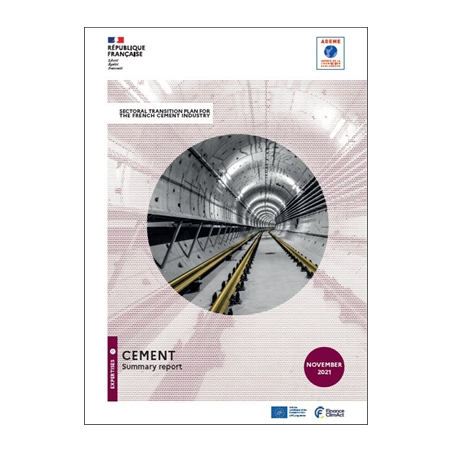Plan de transition sectoriel de l'industrie cimentière en France
Etude/Recherche
Mis en ligne le : 17/11/2021

Summary report
The cement industry faces major technological and economic challenges in order to achieve the decarbonisation targets set under the National low-carbon strategy (SNBC) - an 81% reduction in greenhouse gas emissions in 2050 compared with 2015 for the French industry as a whole. The cement manufacturing process is energy intensive and generates hard-to-abate GHG emissions. With the modelling carried out, and based on the technologies identified, a 54% reduction in greenhouse gas emissions can be achieved at best. Other solutions must therefore emerge if the sector is to meet the 81% decarbonisation target set under the SNBC for industry, especially for the period 2030-2050. Decarbonisation will require massive investments in the production tool, innovation and regional infrastructure. To maintain a decarbonisation trajectory in line with the Paris Agreements, regulation must accompany the changes in the production plants and provide a medium-term strategy to ensure the sustainability of longer-term investments and amplify the participation of financial institutions.
The cement industry faces major technological and economic challenges in order to achieve the decarbonisation targets set under the National low-carbon strategy (SNBC) - an 81% reduction in greenhouse gas emissions in 2050 compared with 2015 for the French industry as a whole. The cement manufacturing process is energy intensive and generates hard-to-abate GHG emissions. With the modelling carried out, and based on the technologies identified, a 54% reduction in greenhouse gas emissions can be achieved at best. Other solutions must therefore emerge if the sector is to meet the 81% decarbonisation target set under the SNBC for industry, especially for the period 2030-2050. Decarbonisation will require massive investments in the production tool, innovation and regional infrastructure. To maintain a decarbonisation trajectory in line with the Paris Agreements, regulation must accompany the changes in the production plants and provide a medium-term strategy to ensure the sustainability of longer-term investments and amplify the participation of financial institutions.
Documents associés
Etude/Recherche
Mis en ligne le : 17/11/2021
Etude/Recherche
Mis en ligne le : 20/01/2022